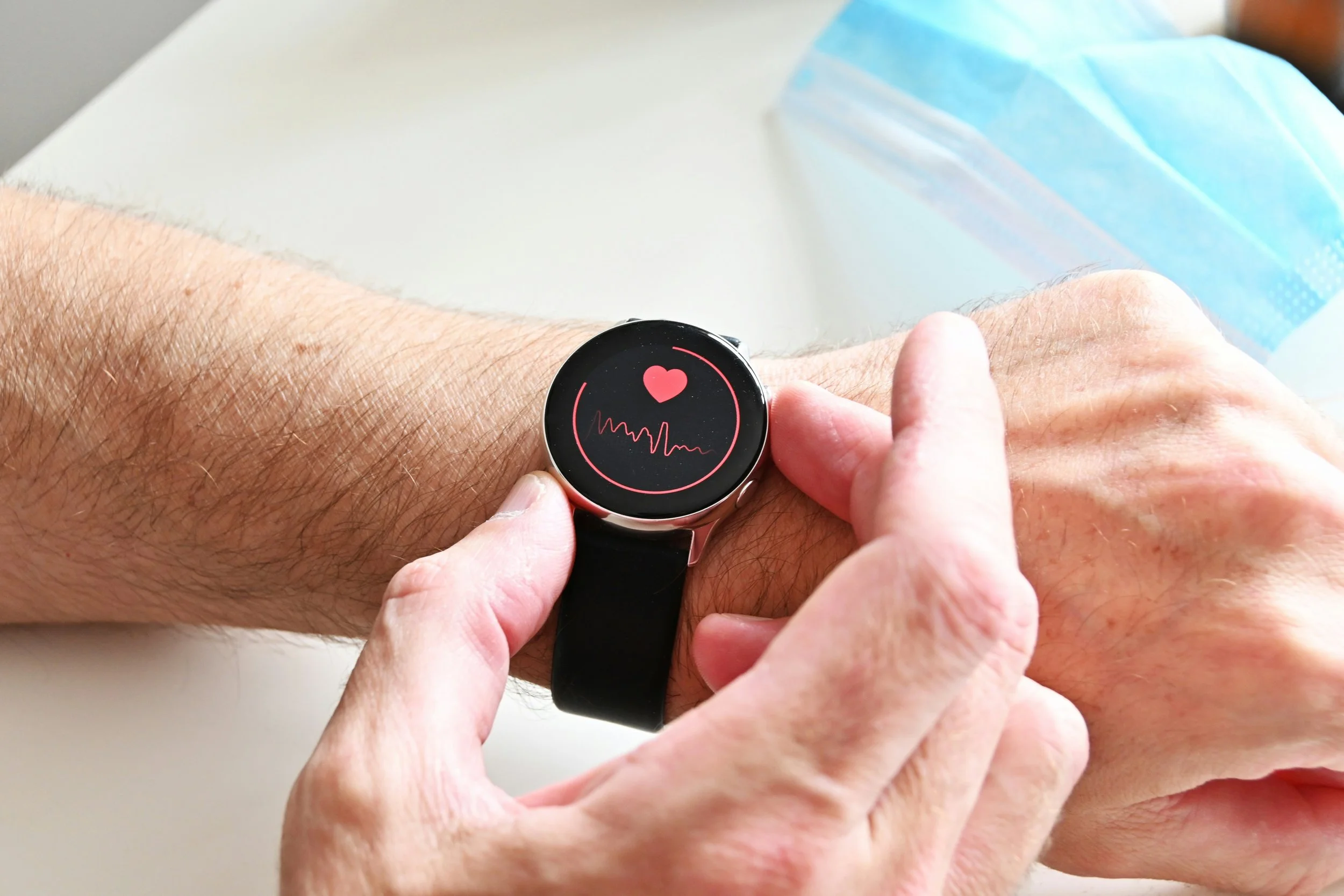
What is The Best Exercise for Your Heart?
In my years of working in cardiac rehabilitation, I’ve seen thousands of patients with a wide range of heart conditions. And without fail, one question always comes up: “What is the best exercise I can do for my heart?” Patients want to know if walking is better than cycling, if swimming is better than the treadmill, or if one machine is more effective than another.

The Best Wearable Devices for Cardiac Rehab Patients in 2025
If you’re recovering from a heart condition or participating in a cardiac rehab program, tracking your heart health safely is essential. Wearable technology—like smartwatches and fitness trackers—can help monitor your heart rate, detect irregular rhythms, and keep you on track with your exercise goals. But not all devices are created equal, especially for people with heart conditions.
Here’s an evidence-based guide to the best wearable devices for cardiac rehab patients, focusing on heart rate accuracy, arrhythmia detection, and clinical-grade monitoring.

Can I play Pickleball After a Heart Attack, Stent, or Bypass Surgery? Getting Back in the Game.
Pickleball has exploded in popularity over the past decade—especially among adults over 50. What started as a niche pastime is now the fastest-growing sport in North America. And it’s easy to see why. With smaller courts, lighter paddles, shorter matches, and a welcoming learning curve, pickleball offers a uniquely accessible way to stay active. But the real magic is its social and welcoming atmosphere. Whether you’re rallying with friends, joining a local league, or simply chatting between games, pickleball creates connection—a powerful motivator for anyone recovering from a health scare.
That’s why so many people recovering from heart events—whether it’s a stent, bypass surgery, or a diagnosis of heart disease—ask the same question: “When can I play again?” They’re not just looking for exercise. They’re looking to return to something that feels joyful, familiar, and social.

Can I Run After a Heart Attack? A Week-by-Week Guide
Throughout my 20 years in hospital-based cardiac rehabilitation I have had countless cardiac patients describe being provided blanket advice to limit lifting to 10 pounds and to avoid overly exerting themselves when discharged from hospital. Although well intentioned, this non-specific advice coupled with delays or an inability to access cardiac rehabilitation has consequences as everyday tasks like walking the dog, climbing stairs, or even carrying groceries can suddenly feel uncertain. Many people who were previously active suddenly find themselves sedentary, not because they want to be, but because they’re unsure what kind of activity is appropriate or safe.

Can I Exercise with Atrial Fibrillation: What You Need to Know
Atrial fibrillation (AF) is the most common sustained cardiac arrhythmia worldwide, affecting over 3 million Canadians and more than 5 million people in the U.S. It’s also one of the most misunderstood conditions when it comes to exercise.
At the Online Exercise Clinic, we’re often asked:
“Is it safe to exercise with atrial fibrillation?”
“How much is too much?”
“What if my heart rate is all over the place?”

The Rise of Smart Fitness: How AI and Fitness Trackers Are Changing Exercise for People with Chronic Health Conditions
In recent years, wearable fitness trackers, smartwatches, and artificial intelligence (AI) have evolved from step counters and calorie trackers into powerful health companions—especially for people living with chronic diseases and disabilities. At the Online Exercise Clinic, we’re seeing firsthand how these tools, when paired with expert guidance from a Clinical Exercise Physiologist, can help people exercise safely, confidently, and consistently.

Can I Exercise With a Pacemaker and/or a Defibrillator? Safety, Benefits, and What You Need to Know
For people living with pacemakers or implantable cardioverter defibrillators (ICDs), exercise can feel intimidating—or even off-limits. But the truth is, when done correctly, physical activity is not only safe for most people with these devices but also vital to long-term health and quality of life. With the proper guidance and understanding of how these medical devices interact with exercise, individuals can build confidence and improve both cardiovascular function and overall well-being.
In this comprehensive guide, we’ll explore the essentials of exercising with pacemakers and defibrillators, why heart rate monitoring is crucial, how equipment and medications can affect your outcomes, and the key safety considerations that every patient—and clinician—should know.

Can I Lift Weights After A Heart Attack, Stent, or Bypass Surgery?
Strength training is safe and effective for people with heart disease including after open-heart surgery. Learn safe, evidence-based strength training guidelines.

Bridging the Cardiac Care Gap: How Virtual Exercise Counselling Can Support Heart Health
Cardiovascular disease remains one of the leading causes of death across Canada, the United States, and Europe. Yet, despite decades of research supporting the role of exercise-based cardiac rehabilitation (CR) in reducing mortality and improving quality of life, access and adherence to these programs remain critically low.
At the Online Exercise Clinic, we believe that virtual, individualized, and evidence-based exercise counselling can help fill a growing gap in cardiac care — one that continues to leave too many people behind.

How Just 150 Minutes of Exercise a Week Can Transform Your Health: The Science Behind the Guidelines
If you live with a chronic condition or disability, you’ve probably been told that “exercise is good for you.” But how much is enough to make a real difference? The answer might surprise you—it’s just 150 minutes per week. That’s about 22 minutes a day.

Teeing Off Safely: Playing Golf While on Cardiac Medications
For individuals with heart conditions, medications are a crucial component of treatment. These medications can have significant effects on the body, influencing how one should approach physical activities like golf. Here’s a look at some common cardiac medications and their potential impacts on golfing.

Why is exercise good for your heart? The Hidden Cardiovascular Benefit of Exercise
Why is exercise good for our hearts? The Hidden Cardiovascular Benefit of Exercise
While most of us know that exercise is good for our health explaining why it is good often stumps many of us including health professionals. For this blog I will focus in on why exercise is beneficial for the cardiovascular system and why engaging in regular exercise is crucial for individuals with coronary artery disease.

Teeing Up for Recovery: Golf After Open-Heart Surgery
Teeing Up for Recovery: Returning to Golf After Open-Heart Surgery
If you’re an avid golfer who has recently undergone open-heart surgery, the desire to return to the course can be a powerful motivator in your recovery. But how do you get back in the swing of things safely and effectively? In this blog post, we’ll explore the journey of returning to golf after open-heart surgery.